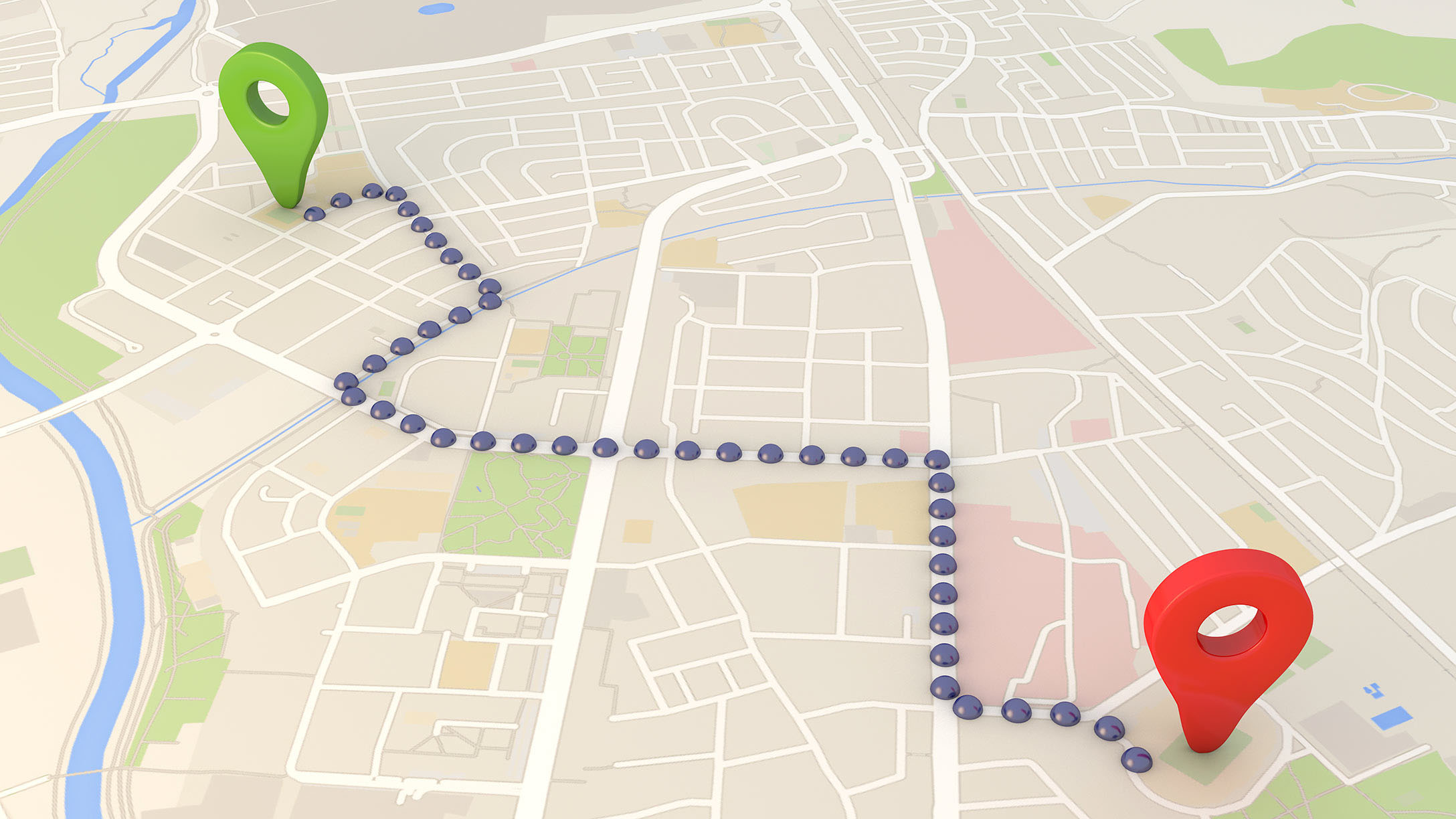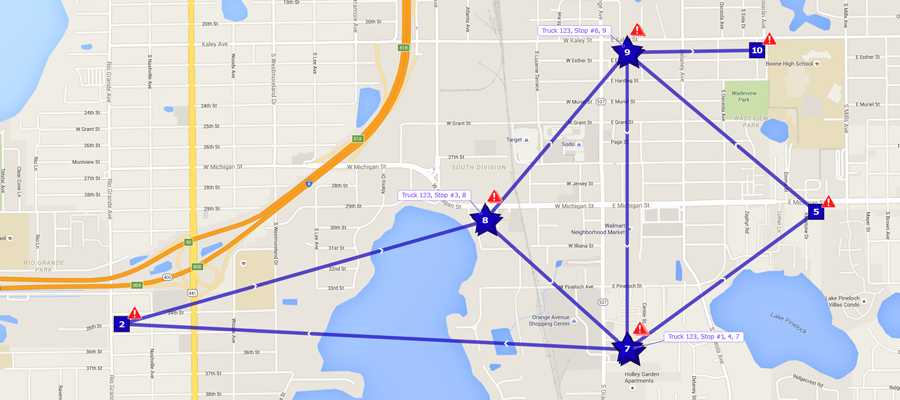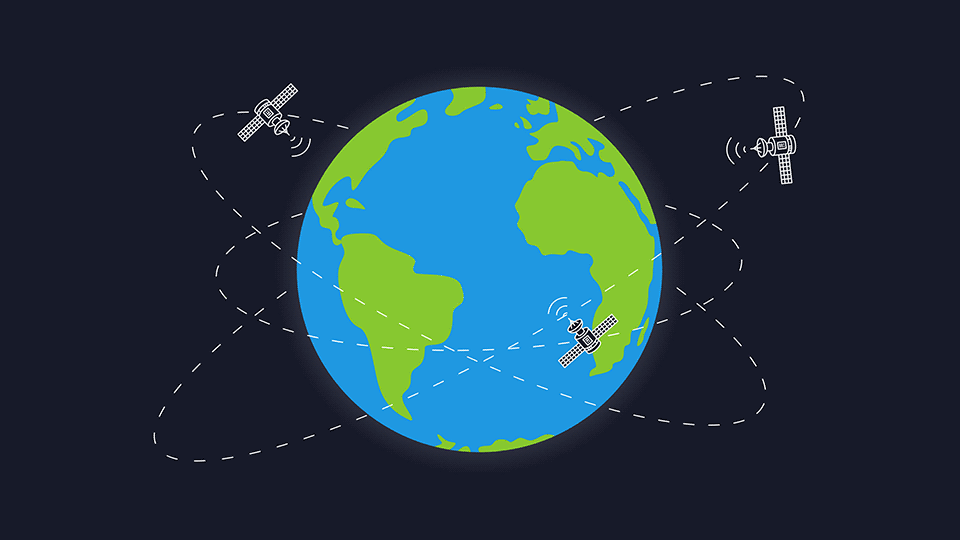What are GPS jammers and how do you combat them?
Learn how GPS jammers work and how Geotab helps safeguard your fleet by detecting signal interference and alerting fleet managers in real time to reduce risk and downtime.
By Geotab Team
Jul 7, 2025
Updated: Jul 8, 2025

Key Insights
- GPS jammers block satellite signals, preventing accurate location tracking.
- GPS blocking is Illegal in many countries with steep fines and penalties.
- Jamming and spoofing are different; one blocks, the other fakes a signal.
- Geotab detects GPS jamming and alerts managers in real time.
These days, having movements tracked online and in the real world is becoming more common. For businesses especially, there is a long list of GPS tracking benefits, including improved routing, real-time vehicle monitoring and greater accountability.
While many people are willing to share their location for good purposes, unauthorized access or the use of GPS jammers can pose serious risks to fleet security. That’s why it’s important to choose GPS solutions that prioritize data protection, reliability and proactive threat detection.
What is a GPS jammer?
A GPS jammer is a typically small, self-contained transmitter device used to conceal one’s location by sending radio signals with the same frequency as a GPS device. When this occurs, even the best GPS device is unable to determine its position due to interference.
The relatively low power and quick start-up time allow the jammers to be used only when required. Although illegal, various types of cheap GPS blockers are available for purchase online, such as:
- Physical shields
- Wi-Fi/Bluetooth jammers
- Remote control jammers
- Spy camera jammers
- Drone jammers
How a GPS jammer works
Here’s how a typical GPS jammer operates to interfere with tracking devices:
- The user plugs the jammer into the automotive auxiliary power outlet.
- The jammer is placed close to the installed GPS tracker.
- When active, the GPS jammer generates an interference signal over a 16-to-33-feet radius to disrupt reception of the GPS satellite signal.
To understand how a jammer functions, it is also helpful to know how the Global Positioning System (GPS) works.
A GPS tracker receives microwave signals from an array of satellite transmitters orbiting the Earth. Once the tracker receives signals from four or more satellites, it determines its position through a series of time calculations and trilateration.
The receiver relies on these precise and specific satellite signals to determine where it is in the world. The GPS tracking device then transmits this position and velocity information to a monitoring location, usually sent over the cellular network.
In some cases, satellite malfunction or solar flares can temporarily disrupt the transmission of GPS signals.
A GPS jammer is different in that it sends out radio signals or signal noise with the same frequency as the GPS device to override or distort the GPS satellite signals.
When this occurs, the GPS device can no longer calculate its position because the satellite signal is masked by the interference.

GPS jamming vs. spoofing
While both GPS jamming and spoofing interfere with location tracking, they do so in different ways.
GPS jamming | GPS spoofing |
|---|---|
| A GPS jammer emits radio frequency noise on the same frequency as GPS, preventing the device from receiving satellite data. As a result, the GPS device cannot determine its location. | A GPS spoofer mimics real satellite signals, tricking the GPS device into calculating a false position. This can cause the system to show incorrect routes or locations. |
Jamming disrupts the signal completely, while spoofing deceives the receiver with fake data.
Who uses GPS jammers?
The reasons for using jammers vary. Originally created by the government, GPS jammers were designed for military use. Concealing vehicle location can be crucial to the success of a mission. The devices act as a cloak, giving the military privacy, increased safety and an overall advantage in high-risk situations.
Other uses include:
- Speeding drivers trying to prevent detection by police
- Criminals using GPS jammers to cover vehicle thefts
- Trucking fleet drivers hiding their location from employers
Are GPS jammers legal?
GPS jamming is illegal in many countries, including the U.S., Canada and the U.K. In the U.S., the federal Communications Act of 1934 outlawed the marketing, sale or use of GPS jammers.
In Canada, the Radiocommunication Act also prohibits importing, manufacturing, distributing, selling, possessing and using GPS jamming devices.
Harsh penalties exist for using jammers. For example:
- Fines of up to $100,000 or more in the U.S.
- Imprisonment
- Loss of equipment
How do GPS jammers impact the transportation industry?
To law enforcement and the transportation industry, GPS jammers are both a nuisance and a cause for concern. Jamming interferes with GPS asset tracking, also known as fleet tracking or telematics, which is a critical source of business data to many companies.
Fleets use telematics to track and manage fuel use, idling, driving behavior, engine health and other activities.
Not only are jammers illegal, but using them can be potentially dangerous. A New Jersey truck driver was fined almost $32,000 by the Federal Communications Commission (FCC) when his GPS jamming device interrupted air traffic control information at Newark Liberty International Airport.
The driver used the jammer in his work truck to hide his location from his employer. An FCC investigator located the jammer using radio monitoring equipment and proved it was the cause of the interference.
How to use Geotab for GPS jamming detection
Fleets can use Geotab solutions to minimize the negative effects of GPS blockers and keep drivers from flying under the radar. When a GPS signal is not received, the Trips History map will show a missing or interrupted trip, calling attention to an issue.
If GPS jamming occurs mid-trip, a straight line will be displayed from when jamming starts to the point where the jamming device is turned off.
Anyone monitoring the vehicle will quickly see this and can investigate the cause of the missing trip information.
There may be other reasons for loss of GPS data besides GPS jamming, like a radio that’s not working properly.

A straight line in MyGeotab indicates GPS disruption.
The GPS module in newer Geotab GO units has a jamming detection function that triggers the device to report a debug log. Fleet managers can see this in the MyGeotab log details as: “GpsJammingDetected.”
Set up alerts for GPS jamming
Geotab users can automate detection by creating a Log Data & Collisions report in MyGeotab and setting it to be sent only when at least one event is detected. When GPS jamming occurs, the report will be sent via email as an alert, prompting further investigation.
It’s important to note that even when a GPS jammer disrupts GPS receiver functionality, all other functions are unaffected. Despite the lost GPS connection, the Geotab GO device will continue to gather and send critical vehicle-related data such as engine data, driver behavior, error codes and auxiliaries.
Geotab is dedicated to maintaining a robust and stable system and will continue to make the GO devices as tamper-proof as possible. To learn more about Geotab’s security policies, visit the Geotab Security Center.
GPS jamming protection with Geotab
GPS blockers can compromise fleet safety, visibility and compliance. With Geotab, fleets gain powerful tools for detecting signal interference in real time, alerting managers and preserving critical fleet data even during disruptions.
By investing in secure driver tracking and tamper-resistant technology, fleets can stay ahead of threats and ensure their operations run smoothly, no matter what interference comes their way.
Subscribe to get industry tips and insights
Frequently Asked Questions
A GPS jammer works by sending out radio signals on the same frequency as GPS devices, disrupting communication between the GPS receiver and satellites. This prevents the device from accurately calculating its location.
Yes, GPS jammers can be detected by telematics solutions like Geotab, which monitor for signal loss patterns, straight-line trip data or interference alerts like “GpsJammingDetected” in device logs.
GPS signals can be blocked by physical obstructions (like buildings or tunnels), atmospheric interference or deliberate jamming and shielding devices. Even placing a tracker in a metal box can block reception.
Yes, GPS spoofing is illegal in many countries, including the U.S., where it violates federal communications laws. Spoofing disrupts public safety systems and is treated as a serious offense.
The Geotab Team write about company news.
Table of Contents
Subscribe to get industry tips and insights
Related posts


The impact of unproductive idling on police vehicle service life
June 10, 2025
3 minute read

Multi-stop route planners: A fleet manager's guide + best tools in 2025
June 5, 2025
5 minute read

Commercial truck insurance cost: Rates by state + how to save
June 5, 2025
5 minute read

